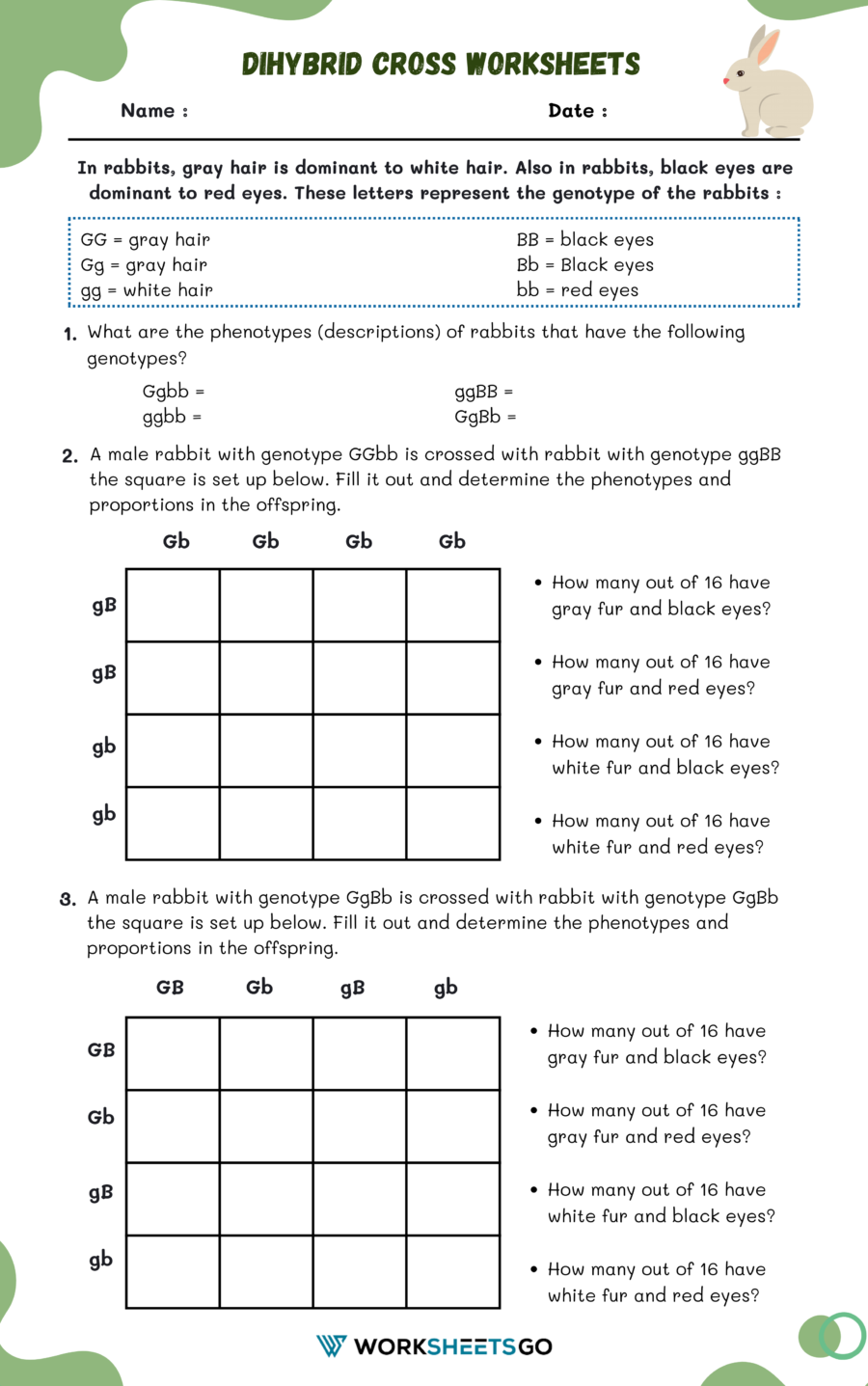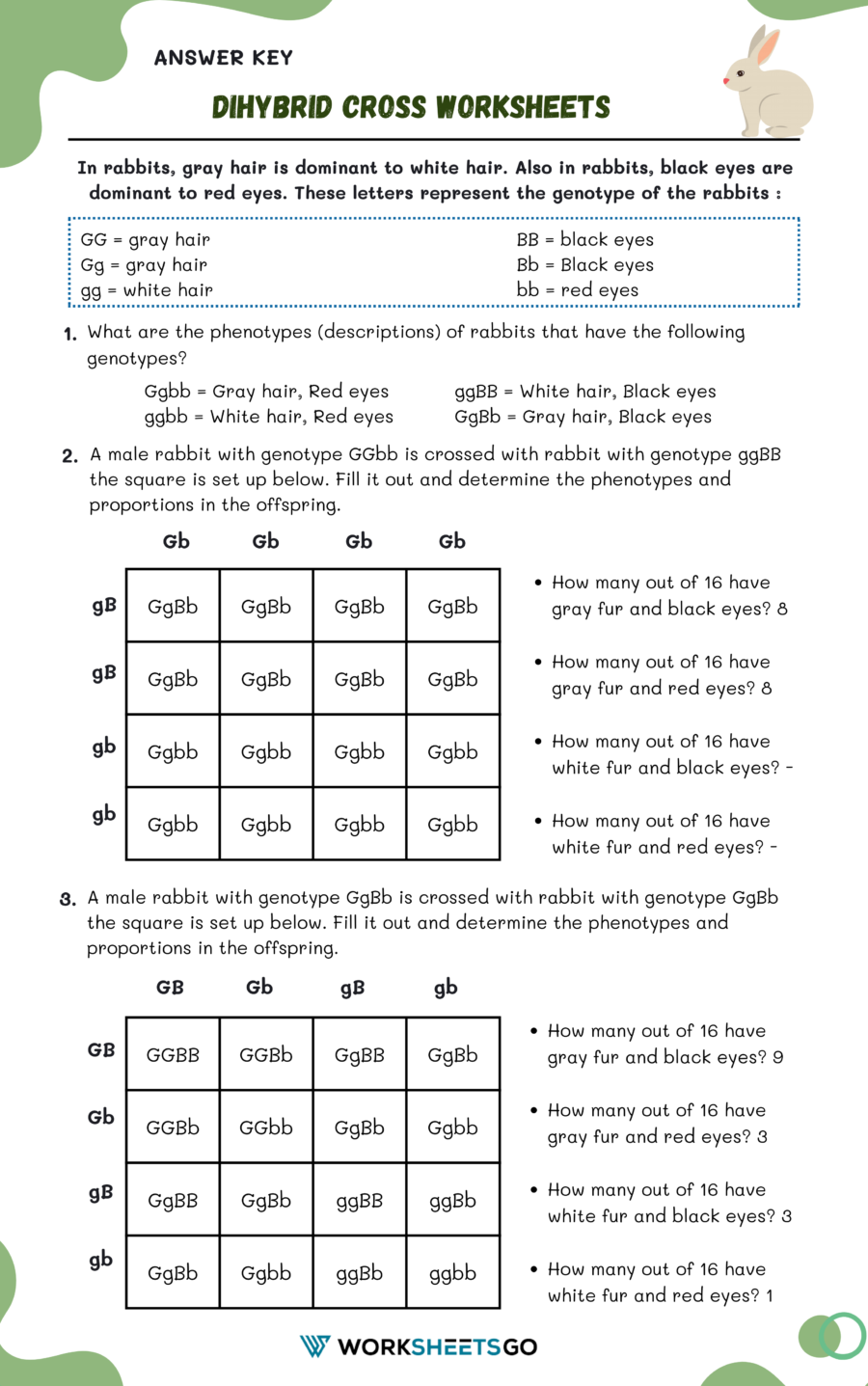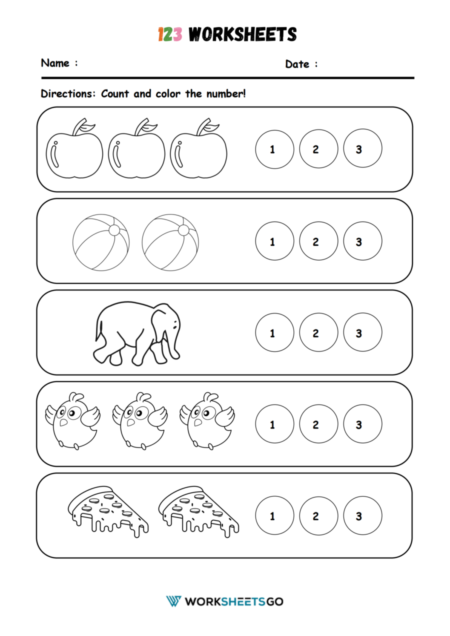This is a printable Dihybrid Cross worksheet for students and teachers. These worksheets can be used as studying materials for a test or quiz. Dihybrid crosses involve tracking two traits simultaneously. For example, we can predict the outcome for offspring as the traits for both height and color.
Dihybrid crosses are a staple of genetics education, offering students a chance to explore the inheritance patterns of two different traits simultaneously. Our Dihybrid Cross Worksheets are designed to guide students through the complexities of dihybrid crosses using “pabbits” – our fictional creatures with easily distinguishable phenotypic traits such as fur color and eye color.

Answer Key

Step-by-Step Guide to Phenotypes and Genotypes
The worksheets begin by asking students to identify the phenotypes of pabbits with various genotypes. This exercise reinforces understanding of how dominant and recessive alleles affect the physical appearance of an organism.
Hands-on Practice with Punnett Squares
Next, students are invited to perform dihybrid crosses using Punnett squares. They will fill in the squares based on the genotypes of parent pabbits to predict the genotypic and phenotypic ratios of their offspring. By doing this, students practice predicting the probability of inheriting certain combinations of traits.
Real-World Applications
Our worksheets not only provide theoretical knowledge but also connect students to real-world applications of genetics. Understanding dihybrid crosses is fundamental in fields such as agriculture, medicine, and conservation biology, where predicting the outcome of breeding programs can have significant implications.
Challenges and Discovery
The worksheets are designed to challenge students and foster critical thinking. They must analyze the resulting genotypes from the Punnett squares and translate these into phenotypes, thereby discovering the power of genetic combination and variation.
Conclusion
Dihybrid Cross Worksheets are a fantastic tool for biology educators to help students grasp the fundamental principles of genetics. Through these exercises, students can understand how traits are passed on from one generation to the next and the role of chance in genetic diversity.







